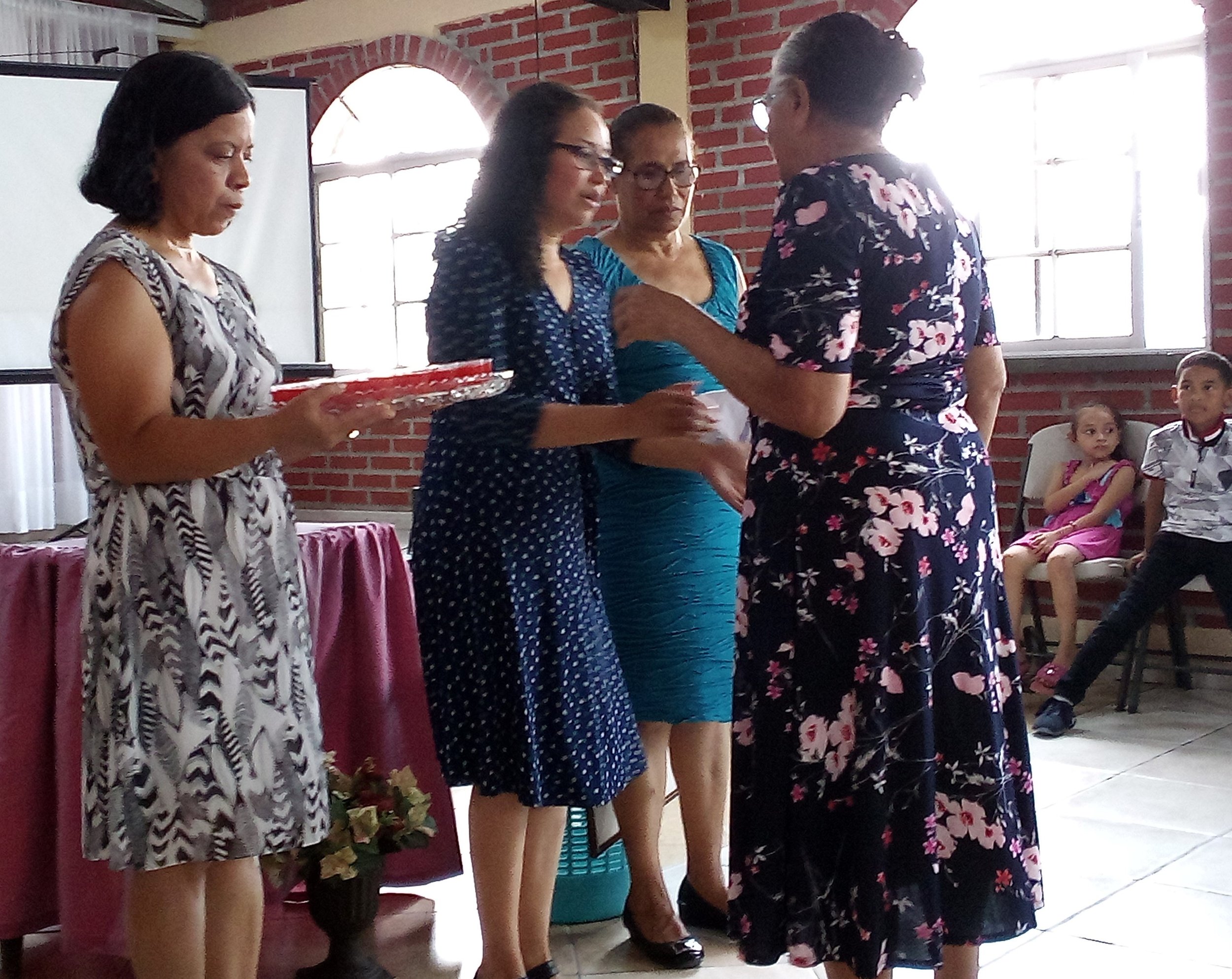The communion service moved me to tears. Being back in Honduras and worshiping with the people of Amor Fe y Vida church would be moving enough, not to mention that Arely Cantor, the pastor serving communion, had participated as a teenager in the studies of Galatians I led in that church in 1992 and 1993. It was, however, “Carmen” coming forward to receive the elements that especially moved me. It struck me that if the church had not worked to shift from a bounded to centered approach after our studying Galatians together, Carmen would have remained seated all these years while others from the church went forward. She would have remained on the shameful side of the bounded-church’s line.
As I recount on pages 44-45 in Centered-Set Church Carmen faithfully attended church but was not allowed to participate in the Lord’s Supper or serve in any leadership role because she was not married to her common-law husband. The study of Galatians propelled the church to shift away from bounded line-drawing. Church leaders visited Carmen and discerned that she was clearly oriented toward Jesus the center. She wanted to get married but her partner refused. She had been faithful to him during their, at that time, 17 years together. They invited Carmen to participate fully in the church. Today she serves on the church council. I have often reflected on and celebrated this positive fruit of Amor Fe y Vida’s centered approach. But I had not before imagined the alternative. What if Amor Fe y Vida was still bounded? Carmen would have lived draped in shame all these years. Tears came to my eyes as I saw her standing before me freed from that shame and receiving communion.
I felt even greater emotion when I saw who stood behind Carmen, next to receive communion —her husband “Rafael.”
Although Carmen had been faithful to Rafael, he had several affairs over the years. Carmen had requested numerous times that they get married. He said “no” every time. She decided to stop asking, but prayed all the more that he would change his ways and marry her. Four years ago, at his initiative, he suggested they get married. Although he did not yet consider himself a Christian, he declared that Amor Fe Vida would be his church and wanted a church wedding. In terms of the centered-set church diagram would could say he was far from the center, but his arrow had begun to turn—slowly. He occasionally visited the church, but a year and a half ago he started coming regularly, made a confession of belief in Jesus, and 6 weeks ago he was baptized. After communion, during a time of sharing, Rafael stood and expressed his gratitude for being part of this church. The pastor told me he does this regularly. Rafael has said that since walking with Jesus he no longer feels the pull of pursuing other women. Although older and suffering from diabetes, Rafael is eager for opportunities to serve in the church.
I was deeply moved, but also challenged by seeing the married, baptized Rafael. The reality is that although I have told Carmen’s story numerous times, I have never thought about nor prayed for Rafael. I celebrated that Amor Fe y Vida’s centered approach had freed Carmen from shamed status and freed her to more fully serve. But when telling the story I had never said, “and let us pray that the gravitational attraction of Jesus, and the centered approach of Amor Fe y Vida will pull Rafael into a relationship with Jesus that will change his relationship with Carmen. Rafael’s standing before me receiving communion challenges me to have even greater expectations of the potential of a centered approach and, especially, of the transformative power of the God of the center.
Mario, the former pastor of Amor Fe y Vida that had led their transition from bounded to centered told me of other stories of the fruit of a centered approach. “Elena’s” marriage had broken and ended. When she remarried, her bounded church shamed her and ended her leadership and teaching roles in the church. Later, however, other leaders discerned her Jesus-centeredness and invited her to once again teach Sunday school. She later became the leader of the entire Sunday school, and eventually planted a church.
Mario is currently involved in a church plant himself in Talanga, his hometown near Tegucigalpa. It meets in a home. As Mario described it more I realized it was a church of refugees from bounded churches. Most all of them had not been attending church. Half the group were involved in a marriage that in one way or another did not meet the common Honduran bounded church standard. They tired of their shamed status and left their churches. A few of them had visited Amor Fe y Vida and asked Mario to start a church like that in Talanga. Do you know any bounded church refugees that you might invite to experience the life-giving experience of a centered church like these people in Talanga?
A number of years ago Iglesia Amor Fe y Vida changed their name as part the process of becoming legally recognized—another church had already filed under that name. Today their name is Viviendo en Amor y Fe, but I continue to use their original name to aid readers in making the connection with the church mentioned in my books.


